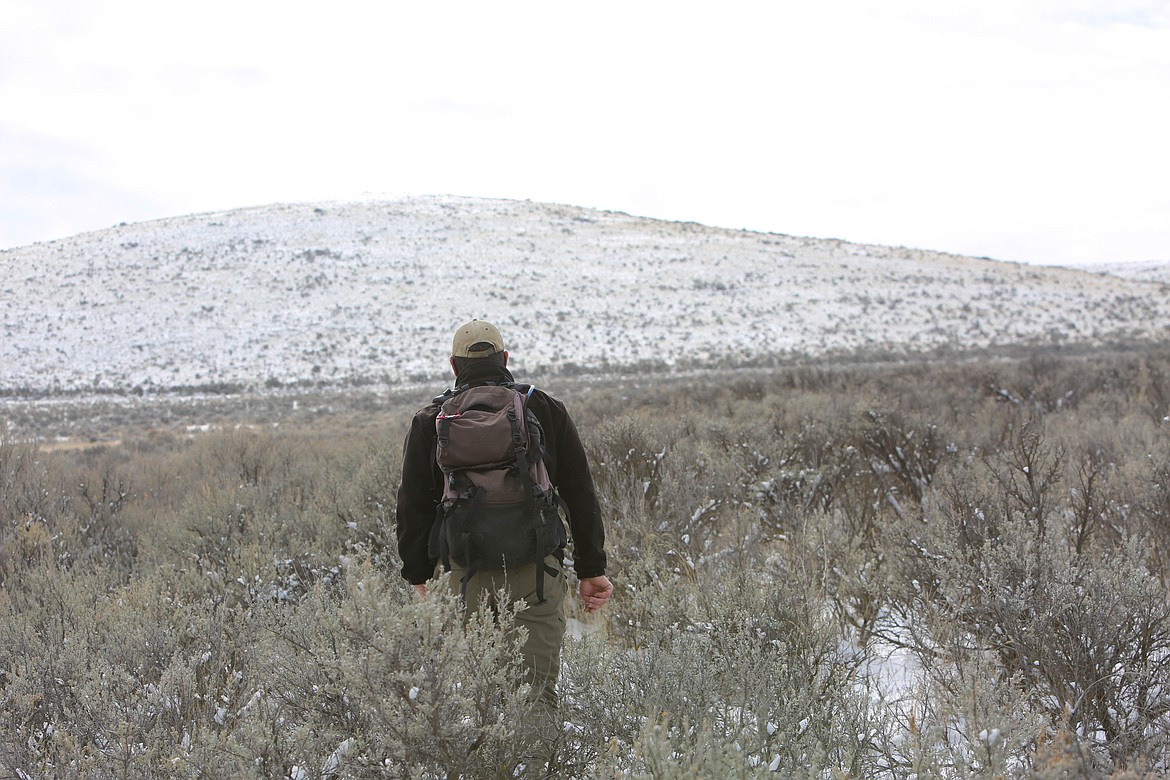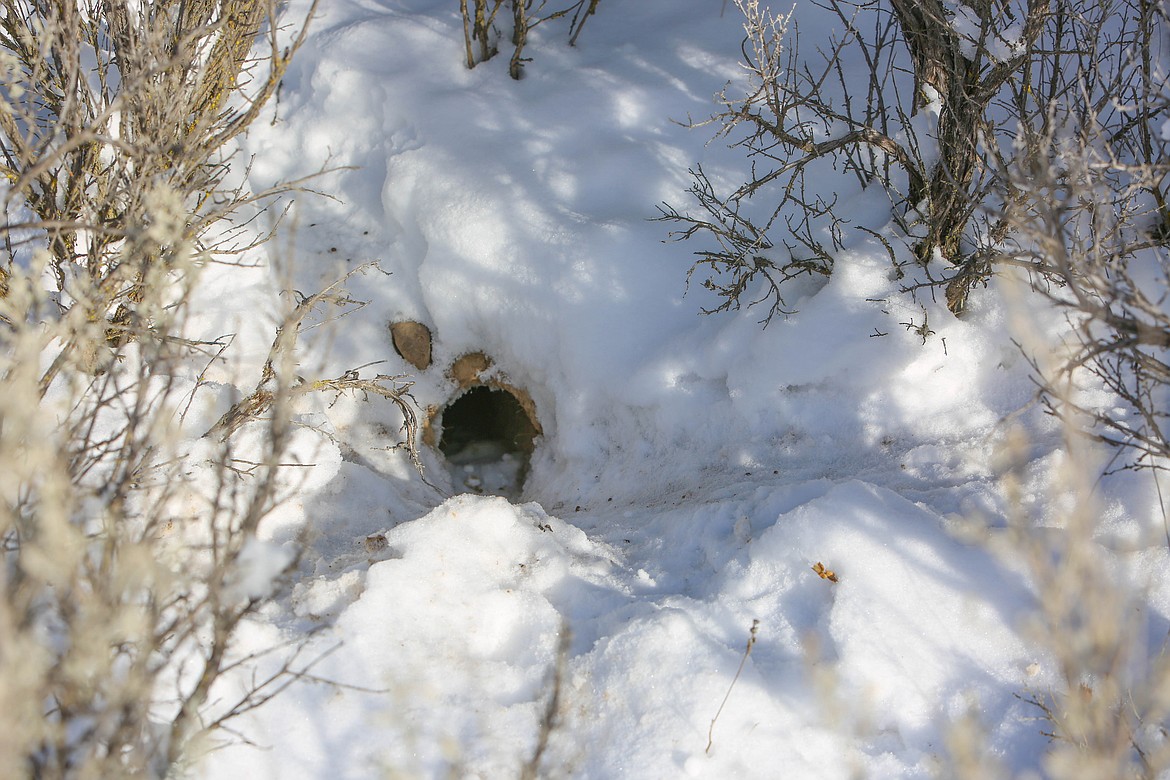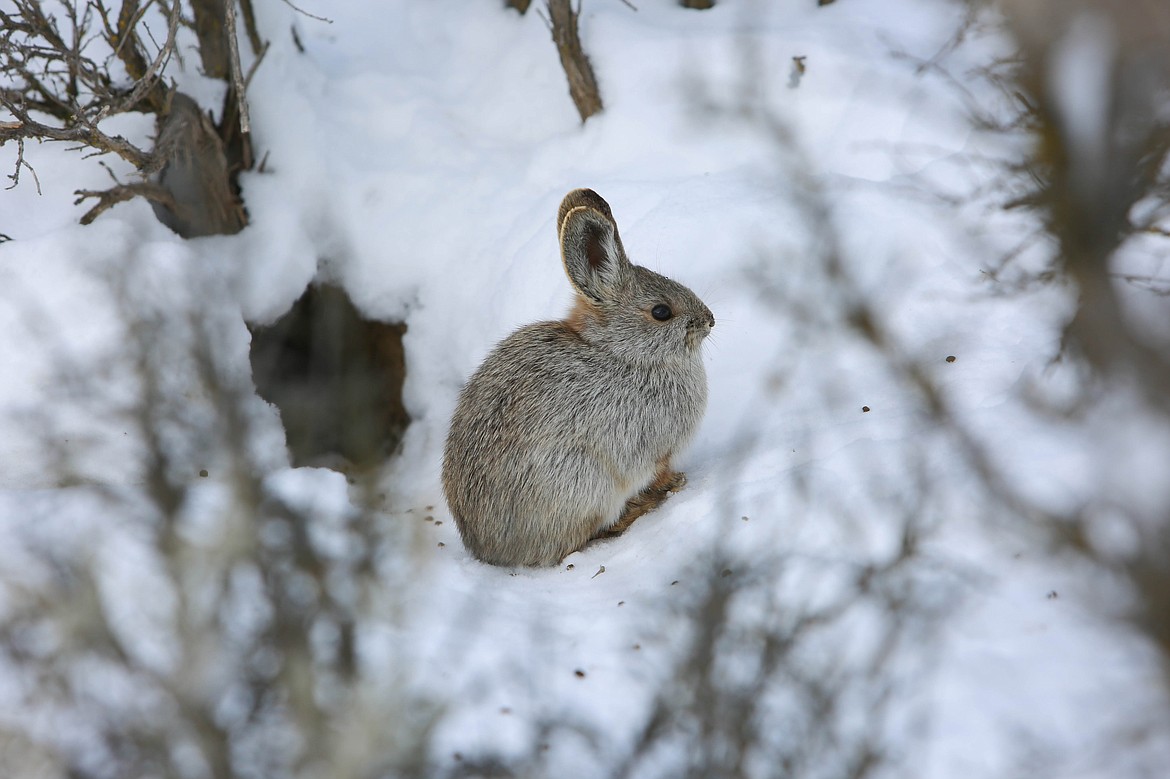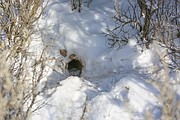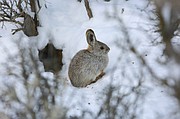A place for pygmy rabbits: Gift of land near Quincy helps in species recovery
A new gift of land to The Nature Conservancy, 282 acres near Quincy, will help secure a future for the endangered Columbia Basin pygmy rabbit.
The land will become part of The Nature Conservancy’s existing Beezley Hills Preserve.
The Nature Conservancy has an active partnership with the Washington Department of Fish and Wildlife to conserve pygmy rabbits by providing suitable habitat and release sites, engaging volunteers to assist with pygmy rabbit conservation and release efforts, and offering temporary housing for staff and researchers at the Moses Coulee Field Station.
The pygmy rabbit is the smallest rabbit species in North America. It is mostly gray, but can be brown. It was emergency-listed as endangered in 2001 and has remained that way since.
What’s best for agriculture is best for the pygmy rabbit – they like deep soil and dense vegetation, said WDFW biologist and pygmy rabbit coordinator Jon Gallie. While human colonization initially drove out the Columbia Basin population, the most recent threats to the species are disease, brush fires and drought.
The Pearl Hill fire in June 2020 seared three years of release efforts, two breeding enclosures, four acclimation pens, 100 square miles of habitat and half of all Columbia Basin pygmy rabbits.
That’s why the new donation is so valuable, said Nature Conservancy media relations manager Robin Stanton. It didn’t burn.
“It’s super, super important habitat now, because it’s high quality habitat that was not damaged by fire,” she said.
The land was donated by Peter Lancaster, lifelong pygmy rabbit enthusiast, and the estate of Paul Schuster.
Lancaster grew up in East Wenatchee working in the orchards, he said.
“I just loved rabbits. I loved whitetail jackrabbits, I loved cottontails, because I could hike to the sage just east of our house, and I spent a lot of time walking around.”
He was 12 the first time he saw a pygmy rabbit.
In the ‘90s, Lancaster started volunteering for the Department of Fish & Wildlife, conducting rabbit surveys, he said. After a number of years, he started doing this independently, twice a month, reporting his findings to contacts he had made over time.
More often than not he found nothing, he said. But when he found some old droppings near Lynch Coulee, he returned to the area until he found an active burrow.
It was the first new colony of Columbia Basin pygmy rabbits discovered in 30 years, he said.
What’s more, the chunk of land came up for sale the day he found the rabbits on them, he said, subdivided into 40-acre sections.
Lancaster’s first move was bringing the land to the attention of the Department of Fish & Wildlife and The Nature Conservancy, he said. But both have months-long land acquisition processes, and the property owner would sell it privately before he awaited their surveys.
So, Lancaster bought the land himself.
“Owning land wasn’t that important to me. I just wanted the rabbits preserved. But no one could really act fast enough, and I could. So I did,” he said.
The enormous chunk of land wasn’t cheap, he said. That’s where Schuster came in. An old kayaking buddy and fellow conservationist, Lancaster asked if he would go in on half.
While Schuster was a big believer in conservation, he hadn’t been particularly intrigued by pygmy rabbits before, Lancaster said.
“He did it as a favor to me, which tells you a lot about him. He was that way,” he said.
Since 1998, Lancaster and Schuster’s property has been used for pygmy rabbit conservation, Stanton said. They built a breeding enclosure on it which bolstered the population by several hundred members until it was left in ruin by 2017’s Sutherland Canyon fire.
Having healed since then, it’s now some of the most valuable land on the preserve. Winter surveys by WDFW indicated 38 active burrows on the property.
“It’s really encouraging they moved across Section 8 and are taking hold, and currently it’s the largest known population of pygmy rabbits in Grant County,” Lancaster said.
Schuster died in February 2020 at the age of 57 due to health complications, Lancaster said. In his will he left his half of the property to The Nature Conservancy.
Schuster purchased the land as a favor and paid property taxes for 22 years, Lancaster said. While conservation was already being done on the land, Lancaster wanted to honor his partner by permanently devoting the land to that purpose.
In March 2021, Lancaster donated the entire 282 acres.
Lancaster never felt like he owned it anyway, he said. It’s for the rabbits and for the people. He was simply a caretaker.
The pygmy rabbit is particularly interesting among the species native to central Washington’s shrub-steppe, he said, as the only thing it needs to survive is soil and sagebrush.
It doesn’t even require water, as it gets enough moisture from the sage.
“It doesn’t need anything except simply a place to live, which in perfect conditions means deep soil, and it will thrive, and that animal is threatened with extinction,” Lancaster said. “I find that kind of strange in a lot of ways.”
Pygmy rabbits are too small for people to eat, Lancaster said. They don’t damage the land they live in. They pose no threat to livestock, and can coexist with them.
In recent years, fires destroyed sagebrush habitat to a degree that Lancaster hadn’t seen in his entire life, he said.
Proper habitat, such as Lancaster and Schuster’s donation, is all they need for long-term survival, he said.
“They don’t need anything but soil and sage,” he said. “But if they don’t have that they don’t live.”
Sam Fletcher can be reached via email at sfletcher@columbiabasinherald.com.




